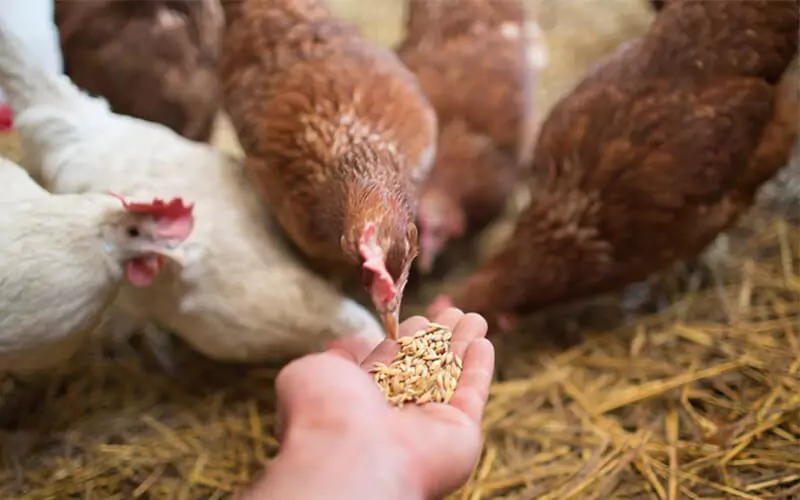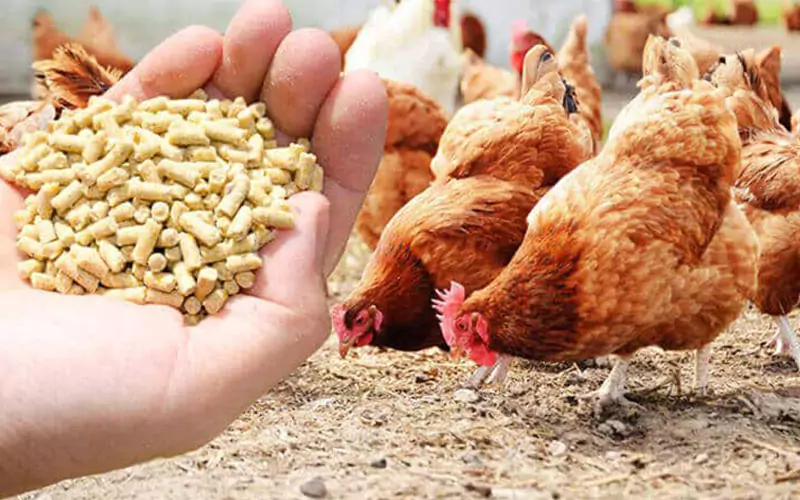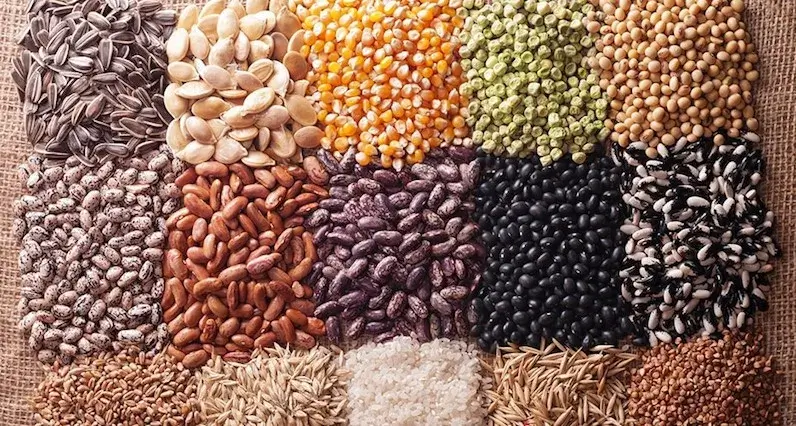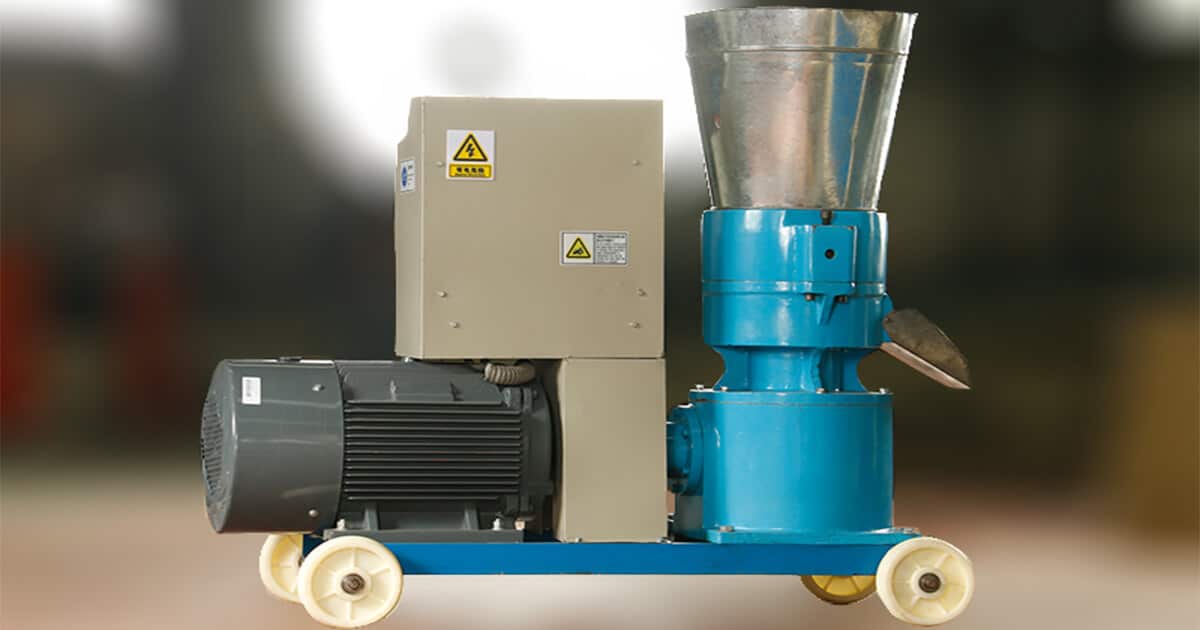A Complete Guide to Making Your Own Broiler Feed
Raising broiler chickens can be a great business. But feed costs can take up a large part of your budget. This guide will teach you how to make your own affordable and nutritious broiler feed. But what are the main ingredients in broiler feed? We will answer all your key questions. You will learn what to feed broilers for fast growth and how to create the best feed mix for your farm.
The Key to Profit: Understanding the Feed Conversion Ratio (FCR)
The Feed Conversion Ratio, or FCR, is a very important number in broiler farming. It measures how well a chicken turns feed into body weight. A low FCR is very good. It means the chicken needs less feed to gain a pound of weight. This shows that your feeding plan is efficient and saves you money.
A good FCR is a sign of a healthy and profitable farm. Since feed makes up 60-70% of production costs, a lower FCR directly saves you money. It also means less feed is wasted, which is better for the environment. In general, a good FCR for broilers is between 1.5 and 2.0.


Main Ingredients: The Building Blocks for Broiler Feed
To make broilers grow fast and stay healthy, you need the right main ingredients in broiler feed. A balanced diet is key. Here are the main building blocks for high-quality broiler feed.
Energy Sources for Growth
Energy is the main ingredients in broiler feed to help chickens grow and stay active. Corn is the most common energy source. It is easy for chickens to digest. Sorghum is another good grain that can sometimes be cheaper than corn.
Protein Sources for Muscle
Protein is vital ingredients in broiler feed for fast muscle growth. Soybean meal is the top choice for protein because it is rich in amino acids. Fish meal is another great protein source that also adds healthy fats, but it can be more expensive.
Minerals and Vitamins for Health
Chickens need minerals for strong bones. Calcium is very important and can be supplied through crushed limestone or oyster shells. Phosphorus also helps with bone growth. A vitamin and mineral premix is often added to the feed to make sure the chickens get everything they need to be healthy.
Other Helpful Additives
A small amount of fat or vegetable oil can be added to the feed for extra energy. Fiber, from sources like wheat bran, helps with digestion. Probiotics can also be added to the feed to maintain good gut health, which is a healthy alternative to using antibiotics.

Best Feed Formulation for Broilers
| Ingredient Type | Ingredient | Percentage (%) |
| Protein Source | Soybean Meal | 35-40% |
| Fish Meal | 10% | |
| Carbohydrate Source | Corn | 35-40% |
| Fat Source | Poultry Fat | 4-6% |
| Fiber | Wheat Middlings | 3-5% |
| Vitamins and Minerals | Vitamin Premix | 1% |
| Mineral Premix | 1% | |
| Additives | Enzymes, Probiotics or Antibiotics | 0.5-1% |
Broiler Feed Formulation for Different Growth Stages
| Growth Phase | Nutrient | Percentage (%) | Notes |
| Starter Phase (0-10 days) | Protein | 23-25% | Higher protein and fat for quick initial growth |
| Fat | 6-7% | ||
| Fiber | 2-3% | ||
| Grower Phase (11-24 days) | Protein | 21-22% | Protein remains critical, needs stabilize |
| Fat | 5-6% | ||
| Fiber | 3-4% | ||
| Finisher Phase (25 days to market) | Protein | 18-20% | Adjust for final growth and market readiness |
| Fat | 6-8% | ||
| Fiber | 4-6% |
Strategies for Making Affordable Broiler Feed
Making your own feed can save a lot of money. The key is to be smart about how you source and mix your main ingredients in broiler feed.
Source Your Ingredients Wisely
Buying your main ingredients, like corn and soybean meal, in bulk can lower your cost per pound. Just make sure you have a cool, dry place to store them to prevent spoilage. Sourcing ingredients from local farms can also cut down on transport costs and support your local community.
Use Cost-Effective Alternatives
Sometimes, common main ingredients in broiler feed can be expensive. You can use alternatives to save money. For example, sunflower meal or pea protein can be cheaper protein sources than soybean meal. Also, watch for seasonal price changes. Certain grains may be cheaper after a local harvest.
Create a Balanced Recipe
A good main ingredients in broiler feed can provide great nutrition to chickens without wasting expensive ingredients. A popular high-protein mixturen often contains about 40% cornmeal and 35% soybean meal as its base. Wheat bran can add fiber at around 15%, while fish meal can be added at 7% to boost protein. A balanced mixture might use 45% corn and 20% sorghum. Plant-based feeds are also an option, you can use the ingredients like sunflower meal and pea protein.
A Step-by-Step Guide to Making Broiler Feed
Making your own feed is a simple process with the right tools. Here are the main steps.
Step 1: Sourcing and Preparing Ingredients
First, gather all your high-quality main ingredients in broiler feed. Ensure you have a clean, dry place to store them, like in airtight containers. Use a scale to weigh each ingredient carefully according to your chosen recipe.
Step 2: Grinding and Mixing
Next, you need to grind any whole grains. A hammer mill chicken feed grinder or a smaller feed grinder can turn them into a powder. After grinding, put all the dry ingredients, vitamins, and minerals into a feed mixer. A good mixer will blend everything evenly so that every pellet is nutritionally the same.
Step 3: Pelletizing, Cooling, and Storage
Use a feed pellet mill to press the mixed powder into pellets. As the pellets come out of the machine, they will be hot, often up to 88°C, with a moisture level of about 17%. They must be cooled down quickly. A cooler will bring their moisture level below 12% for safe storage. Once cooled, store the finished pellets in sealed bags or containers in a cool, dry place. Be sure to label each batch with the date it was made.
Grower Feed vs. Broiler Feed: Knowing the Difference
It is important to know that grower feed and broiler feed in main ingredients are not the same. They are made for different purposes. The main difference is the protein level. Broiler feed is very high in protein, usually 20-24%. This is designed to make the chickens gain weight as quickly as possible. Grower feed has less protein, typically 16-18%. It is used for chickens that are growing at a more natural, steady pace, not for rapid meat production.

Tips for Optimal Broiler Growth
Besides high-quality feed, other things can help your broilers grow faster and stay healthier.
Smart Feeding and Watering:
Always give your broilers access to fresh, clean water. Dehydration can slow down their growth. Giving them several smaller meals throughout the day can also help with better digestion.
A Controlled Environment:
Keep the broiler house at a comfortable and consistent temperature. Chicks especially need warmth to grow well. A proper lighting schedule is also important, as constant bright light can cause stress.
Health and Monitoring:
Keep a close watch on your flock for any signs of illness. Regular health check-ups and timely vaccinations are key to preventing problems. Also, weigh your birds regularly to track their growth and adjust your main ingredients in broiler feed as needed.
